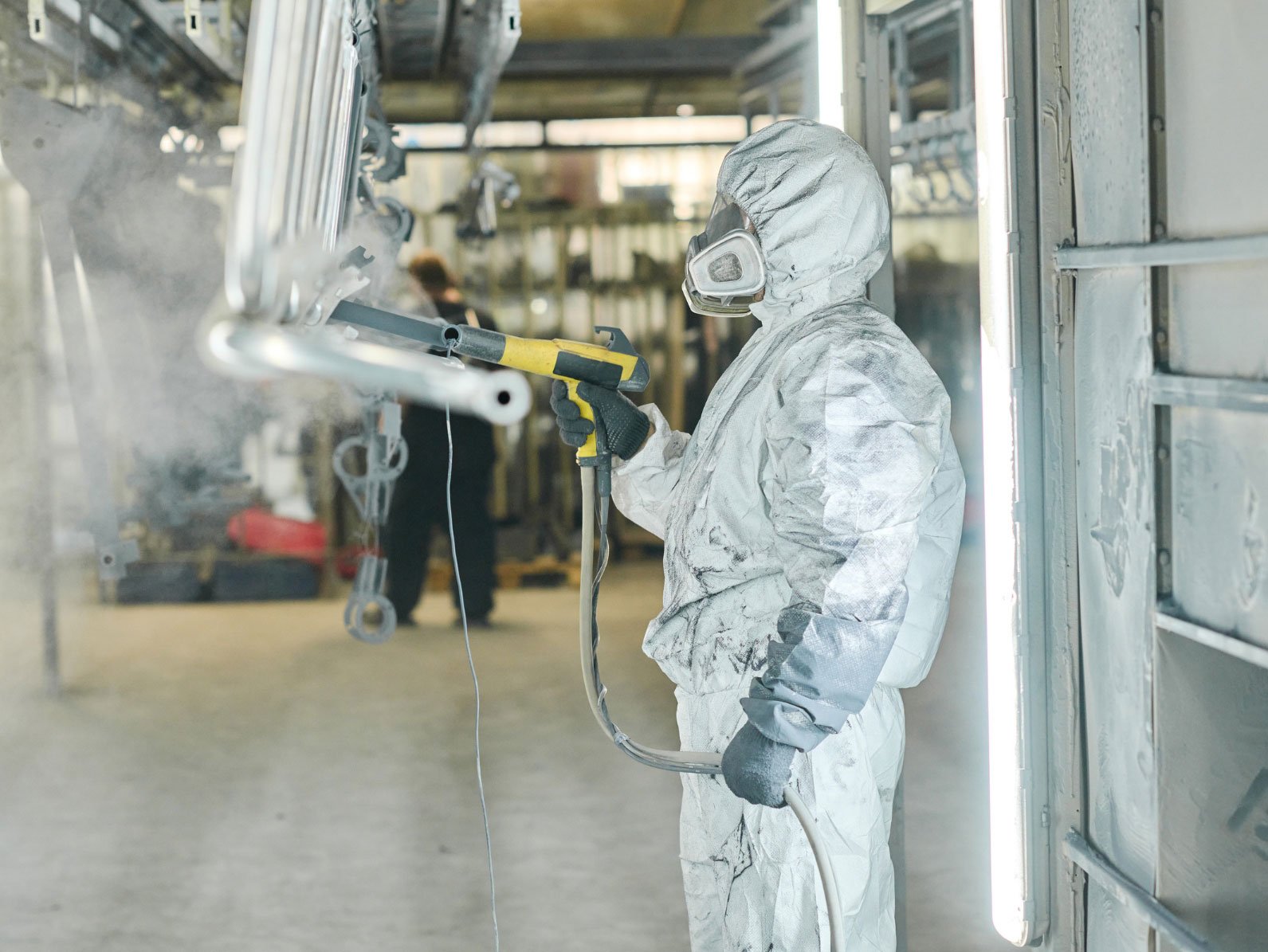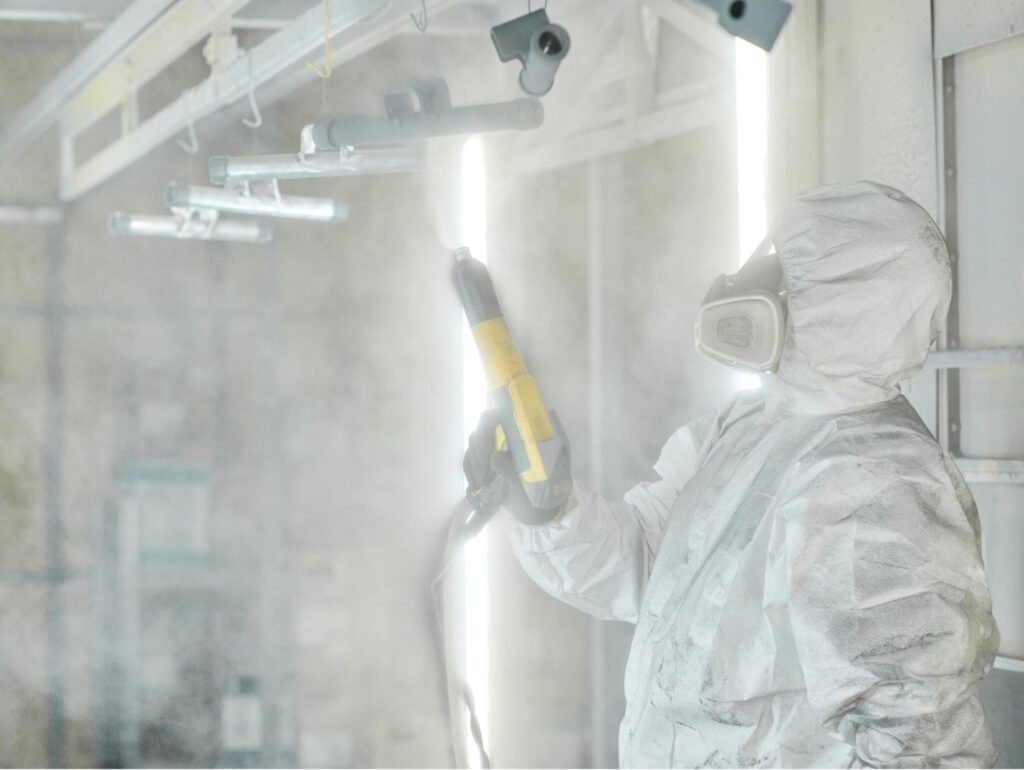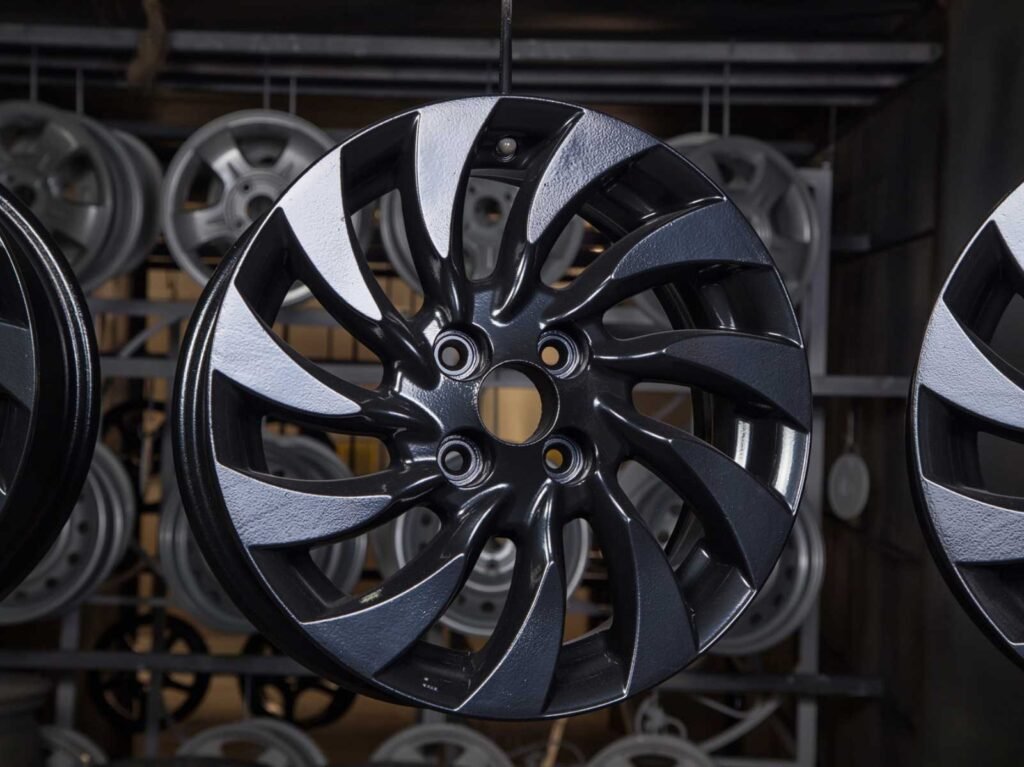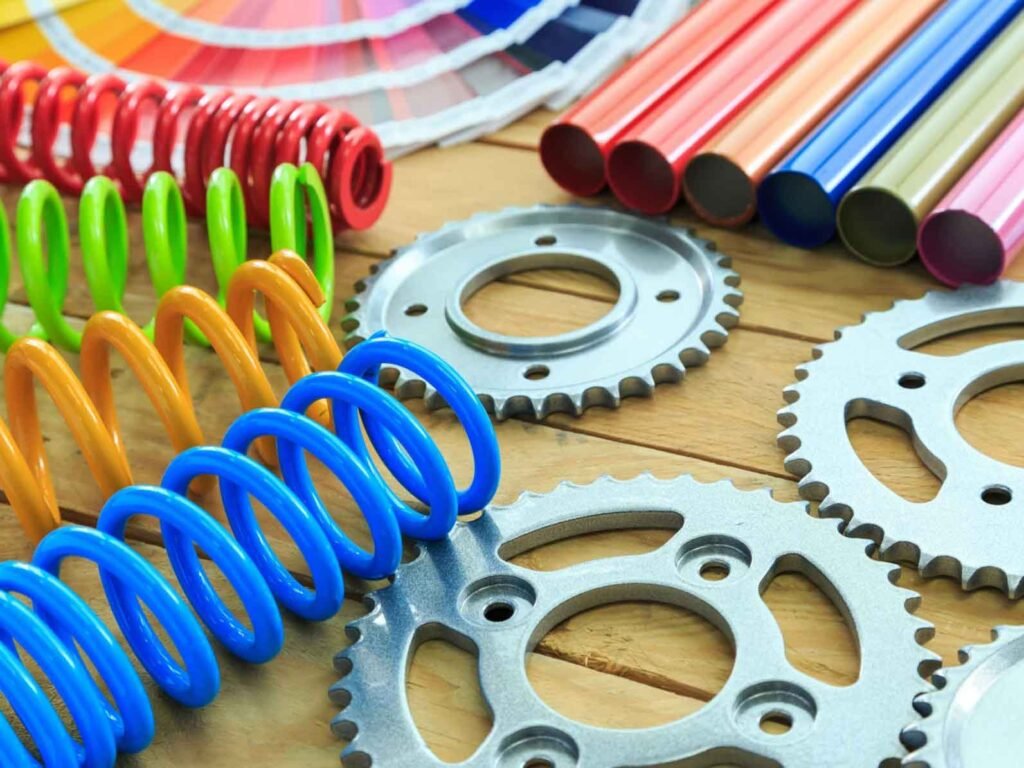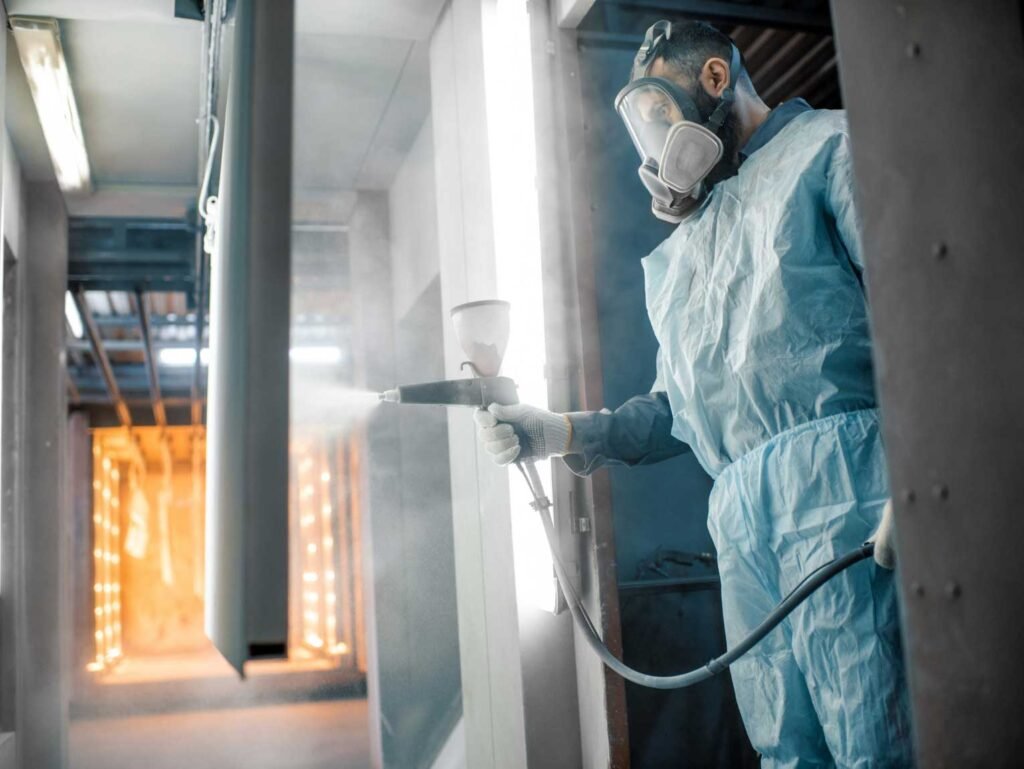Have you ever wondered what Clear Powder Coating is and why so many industries are turning to it? Is it just another trend, or is there something more to it?
Clear Powder Coating is a process where a transparent powder is applied to surfaces, providing a durable, protective layer that can withstand the elements without altering the appearance of the material beneath. It’s used in various industries, from automotive to furniture, because it offers both protection and a visually appealing finish.
Let’s explore its key features!
How is Clear Powder Coating Processed?
Understanding the process behind Clear Powder Coating is key to appreciating its effectiveness. Unlike traditional liquid coatings, the powder coating process involves several steps that result in a durable, smooth, and high-quality finish. Here’s a look at how it’s done.
Clear Powder Coating involves a multi-step process that includes surface preparation, powder application, curing, and quality checks. Each step plays an important role in ensuring a successful and long-lasting coating.
1. Surface Preparation
Before applying Clear Powder Coating, the surface must be thoroughly cleaned and prepped. This is a crucial step for ensuring good adhesion and a flawless finish.
- Cleaning: The surface must be free of any dirt, oil, grease, or rust. Any contaminant left on the surface can lead to imperfections in the coating.
- Pretreatment: This often involves chemical cleaning, sandblasting, or other treatments to remove impurities and create a surface that the powder can bond to more effectively.
Proper surface preparation is key to a high-quality finish that lasts.
2. Powder Application
Once the surface is clean and ready, the next step is the application of the powder.
- Electrostatic Application: Powder coating is applied using an electrostatic spray gun that charges the powder particles. The powder particles are attracted to the grounded metal surface, creating a uniform layer. The process is similar to spray painting but with the key difference that powder is used instead of liquid paint.
- Thickness: The thickness of the powder coating can be controlled by adjusting the spray settings. The goal is to apply an even, consistent layer across the entire surface.
The electrostatic process ensures that the powder sticks to the surface without dripping or sagging, making it much cleaner and more efficient than traditional liquid coatings.
3. Curing
Once the powder is applied, the next step is curing, which is where the powder “sets” to form a hard, durable finish.
- Curing Oven: The coated product is placed in a curing oven, where it is exposed to heat (typically between 160-200°C or 320-400°F). This heat causes the powder to melt, flow, and chemically react to form a solid, durable coating.
- Curing Time: Depending on the type of powder used, the curing time can vary, but generally, it takes about 10-20 minutes for the powder to fully cure. The curing process not only hardens the finish but also enhances the coating’s resistance to chemicals, UV rays, and physical wear.
Proper curing is crucial for achieving the desired properties of the coating, including durability and resistance.
4. Cooling and Inspection
After curing, the coated product is allowed to cool. Once cooled, the coating should be inspected for any defects such as uneven coating, bubbles, or inconsistencies. This is the final check to ensure that the product meets the desired quality standards.
- Visual Inspection: A visual check ensures the finish is smooth, even, and free from defects.
- Performance Testing: In some cases, additional tests like scratch resistance, adhesion testing, and corrosion testing may be conducted to confirm the quality of the finish.
If any issues are identified during the inspection, the product may need to be reprocessed to fix the problem. Quality checks ensure that only the best products are delivered to customers.
What are the advantages of Clear Powder Coating?
Clear Powder Coating is fast becoming the go-to solution for many industries. But why is it so widely adopted?
Clear Powder Coating offers a number of advantages: it’s long-lasting, cost-effective, and environmentally friendly, among other things. These benefits make it an excellent investment for industries looking to boost their product’s durability while also being mindful of costs and environmental impact.
Here are some of the key benefits:
1. Long-Term Durability
Clear Powder Coating creates a protective layer that helps extend the life of your products:
- Resistant to wear and tear: Whether it’s furniture, automotive parts, or industrial machinery, Clear Powder Coating ensures your products will remain in excellent condition for a long time.
- Resistant to UV and environmental factors: Its ability to withstand the sun’s rays and harsh weather conditions ensures that the coating doesn’t fade or degrade.
The durability of Clear Powder Coating means less need for repairs, touch-ups, and replacements, saving you time and money.
2. Cost-Effectiveness
While the initial cost of Clear Powder Coating may be higher than traditional paint, the long-term savings make it worthwhile:
- Lower maintenance costs: The durable coating reduces the frequency of repairs and touch-ups, meaning less downtime and lower maintenance costs for your products.
- Longer product life: By protecting against corrosion, fading, and scratches, Clear Powder Coating increases the lifespan of your products, reducing the need for early replacements.
In the long run, the cost savings provided by Clear Powder Coating can outweigh the initial investment.
3. Eco-Friendly
Clear Powder Coating is a much greener choice compared to liquid paints:
- No volatile organic compounds (VOCs): As it doesn’t contain solvents, Clear Powder Coating doesn’t release harmful chemicals into the air.
- Recyclability: Unused powder can be collected and reused, significantly reducing waste.
For businesses that prioritize sustainability, Clear Powder Coating provides a way to meet environmental standards without compromising on product quality.
4. Aesthetic Appeal
Clear Powder Coating not only offers protection but also maintains the beauty of the underlying material:
- Preserves natural textures and colors: Unlike opaque paints, it allows the natural look and feel of the material to show through.
- Uniform finish: The smooth and consistent application ensures a sleek, high-quality finish every time.
What are the drawbacks of Clear Powder Coating?
While Clear Powder Coating has many advantages, it’s important to consider its potential drawbacks before choosing it for your project. Here are some of the limitations of using Clear Powder Coating.
Clear Powder Coating does have some drawbacks, including challenges with surface imperfections, the need for specialized equipment, and potential difficulty with touch-ups. These factors should be considered, especially if you are new to this coating technique.
1. Surface Defects and Imperfections
While Clear Powder Coating provides a smooth finish, certain issues can still arise:
- Surface preparation is crucial: If the surface isn’t properly cleaned and prepped before application, it may lead to poor adhesion, bubbles, or imperfections in the finish.
- Contamination: Any contamination on the surface, such as dirt, grease, or moisture, can cause defects in the coating.
Ensuring that surfaces are properly cleaned and treated before applying Clear Powder Coating is essential for achieving the best results.
2. Specialized Equipment Required
Clear Powder Coating is different from traditional liquid coatings, and it requires specific equipment:
- Powder coating guns: These guns are needed to apply the powder in an even, controlled manner. It’s not something you can do with standard paint sprayers.
- Curing ovens: After the powder is applied, it needs to be cured in a heat oven to set the coating. This requires specialized equipment that may not be available in every facility.
If you don’t already have the right equipment, the initial investment can be higher than opting for traditional coatings.
3. Difficult to Touch-Up
Unlike liquid paint, which is easy to touch up, Clear Powder Coating can be tricky when repairs are needed:
- Touch-ups may not match the original finish: If a section of the coating is damaged, it can be difficult to apply the same level of smoothness and finish, especially if the rest of the surface is already cured.
- Potential to affect the coating’s appearance: Improper touch-ups may lead to noticeable differences in texture or shine.
Which materials can Clear Powder Coating be applied to?
You might be wondering which materials are suitable for Clear Powder Coating. The versatility of this coating technique allows it to be used on a wide range of surfaces.
Clear Powder Coating is most commonly used on metals such as aluminum, steel, and iron, but it can also be applied to certain plastics and other substrates. Its ability to adhere to different materials makes it highly versatile.
1. Metal Surfaces (Aluminum, Steel, and Iron)
- Aluminum: Clear Powder Coating works particularly well on aluminum, offering excellent corrosion resistance and a high-quality finish that enhances the natural beauty of the metal.
- Steel: It’s perfect for steel surfaces, providing a tough, protective layer that resists rust and wear.
- Iron: Whether it’s cast iron or wrought iron, Clear Powder Coating can be applied effectively, providing added protection and a smooth, polished appearance.
Metals are the most common substrates for Clear Powder Coating, especially in industries such as automotive, architecture, and manufacturing.
2. Plastic Surfaces
Clear Powder Coating can be applied to certain plastics, as long as they can withstand the curing temperature. This makes it suitable for plastic components used in appliances, electronics, and automotive parts.
3. Other Materials
In some cases, Clear Powder Coating can also be applied to materials like glass and wood, provided they meet the necessary requirements for surface preparation and temperature resistance. However, it’s less common compared to its use on metals.
What type of powder is used in Clear Powder Coating?
The powder used in Clear Powder Coating is a key component of its performance. It’s different from the traditional paints and coatings you might be used to, so let’s break it down.
The powders used in Clear Powder Coating are typically made of either polyester, epoxy, or hybrid materials. Each type of powder has its own unique set of properties that make it suitable for specific applications.
1. Polyester Powder
Polyester powder is one of the most commonly used types of powder in Clear Powder Coating:
- UV resistance: It has excellent resistance to UV rays, which makes it ideal for outdoor applications where exposure to sunlight is a concern.
- Durability: Polyester powders are highly durable and offer excellent protection against weathering, scratches, and impacts.
This type of powder is often used for applications like automotive parts, outdoor furniture, and architectural finishes.
2. Epoxy Powder
Epoxy powders offer superior adhesion and chemical resistance:
- Best for indoor use: Epoxy powders are highly resistant to corrosion and chemicals, but they are generally more vulnerable to UV degradation than polyester powders. Thus, they are typically used for indoor applications or in environments with less exposure to sunlight.
- Strong adhesion: This makes epoxy powder ideal for metal parts that need to endure exposure to oils, solvents, and chemicals.
3. Hybrid Powders
Hybrid powders are a combination of polyester and epoxy, offering the best of both worlds:
- Balanced properties: Hybrid powders provide a good mix of durability, UV resistance, and corrosion protection. They are commonly used in automotive and industrial applications, where a balance of performance and cost-effectiveness is required.
How does Clear Powder Coating compare to other coating methods?
You might be asking: how does Clear Powder Coating stack up against other coating methods, like traditional liquid paint? Is it really that much better?
Clear Powder Coating has several advantages over traditional coating methods, particularly when it comes to durability and environmental impact. However, there are still areas where liquid coatings may have an edge.
1. Clear Powder Coating vs. Liquid Paint
- Durability: Clear Powder Coating is more durable than liquid paint. It forms a thicker, more resistant layer, which is better at protecting against scratches, corrosion, and UV degradation.
- Environmental Impact: Clear Powder Coating doesn’t release harmful solvents or VOCs into the air, making it a more eco-friendly choice compared to liquid paints, which are typically solvent-based.
- Aesthetic Finish: While liquid paints can offer a wide range of finishes, Clear Powder Coating provides a smoother, more consistent finish with no drips, runs, or sags.
2. Clear Powder Coating vs. Other Coating Methods
- Electroplating: Electroplating offers a metallic finish but lacks the thickness and protective properties of Clear Powder Coating. It also requires more intensive processes and equipment.
- Anodizing: Anodizing is another metal finishing process that enhances durability, especially for aluminum, but Clear Powder Coating offers superior protection against wear and corrosion.
How long does Clear Powder Coating last?
Another common question is: how long will Clear Powder Coating last, and is it worth the investment?
Clear Powder Coating offers excellent longevity, with its protective layer providing years of durability and resistance to wear. The lifespan can vary depending on the environment, but it’s generally a long-lasting option.
1. Indoor vs. Outdoor Durability
- Indoor use: For indoor products, Clear Powder Coating can last for 10-20 years without significant signs of wear.
- Outdoor use: For outdoor applications, where exposure to UV rays, rain, and other harsh elements can degrade coatings, Clear Powder Coating will still perform well for 5-10 years, especially when using UV-resistant powders.
2. Environmental Impact
By providing an effective barrier against corrosion and UV damage, Clear Powder Coating helps prolong the life of your products, even in challenging environments.
What is the cost of Clear Powder Coating? Is it worth the investment?
When it comes to any type of coating, cost is a crucial factor. But is Clear Powder Coating really worth the higher initial investment? Let’s explore the costs and long-term benefits.
Clear Powder Coating generally involves a higher upfront cost compared to traditional liquid coatings. However, its durability, environmental benefits, and cost-effectiveness over time make it a smart investment for many industries.
1. Upfront Costs vs. Long-Term Savings
- Initial investment: The cost of equipment (e.g., powder coating guns and curing ovens) and the powder itself can be higher than liquid paints, especially for smaller operations. Additionally, surface preparation can also add to the cost.
- Long-term savings: While the upfront costs may be higher, Clear Powder Coating can save you money over time. The superior durability means less frequent re-coating or repairs, reducing maintenance costs. Products coated with Clear Powder Coating last longer and are less susceptible to corrosion, saving on replacement costs.
2. Cost of Powder and Labor
- Powder costs: The price of powder varies based on the type (polyester, epoxy, or hybrid). However, it generally remains more cost-effective than using solvent-based paints, especially for large runs or high-volume applications.
- Labor costs: Powder coating processes may require more skilled labor, as applying the powder and curing it requires more precision. This can increase labor costs compared to traditional liquid coatings.
3. Economic Return and Investment Value
- Durability translates into savings: The longer-lasting finish means products require fewer touch-ups and less frequent replacements. This can be a significant advantage in industries where long-term performance is crucial.
- Sustainability and eco-friendliness: Clear Powder Coating’s lack of harmful solvents and VOCs can be an added bonus for companies that want to improve their environmental credentials. This can have a positive effect on your company’s reputation and even help with regulatory compliance.
Conclusion
If you’re considering integrating Clear Powder Coating into your manufacturing process or upgrading your current equipment, Tifuls is here to help. With our top-of-the-line powder coating systems, including powder coating lines, booths, guns, and curing ovens, we provide the equipment and expertise you need to achieve professional, high-performance results.
Contact us today to learn more about our customized powder coating solutions. Let’s take your coating process to the next level!

